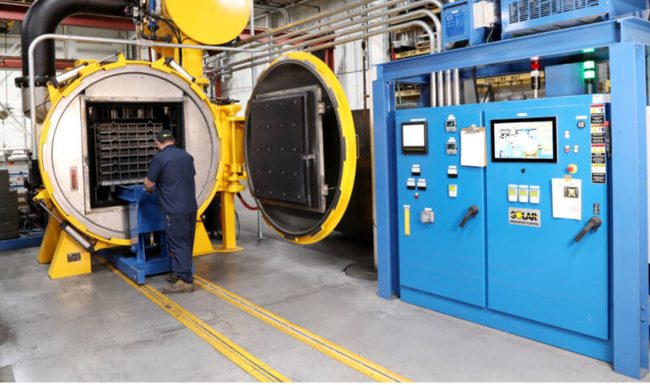Heat treatment
Case hardening by Nitriding process
Nitriding is a case-hardening process in which nitrogen is introduced into the surface of a ferrous alloy such as steel by holding the metal at a temperature below that at which the crystal structure begins to transform to austenite on heating
as defined by the Iron-Carbon Phase Diagram . The material typically is placed in contact with ammonia, which allows the transfer of nitrogen to the surface during its thermal decomposition to nitrogen and hydrogen. Other special nitriding processes are also used for certain types of stainless steels involving the decomposition of nitrogen gas at high temperatures

Case hardening by induction
is the process of heating electrically conductive materials like metals by electromagnetic induction, through heat transfer passing through an induction coil that creates an electromagnetic field within the coil to melt down steel, copper, brass, graphite, gold, silver, aluminum, and carbide.
An induction heater consists of an electromagnet and an electronic oscillator that passes a high-frequency alternating current (AC) through the electromagnet.
The rapidly alternating magnetic field penetrates the object, generating electric currents inside the conductor, called eddy currents. The eddy currents flow through the resistance of the material, and heat it by Joule heating. In ferromagnetic and ferrimagnetic materials, such as iron,
heat also is generated by magnetic hysteresis losses. The frequency of the electric current used for induction heating depends on the object size, material type, coupling (between the work coil and the object to be heated) and the penetration depth.


In numburs
We supply the highest precision parts to a variety of the biggest steel, cement, fertilizers, telecommunications and food manufacturers in the Middle East.
0
Employee
0
Machine
0
M
Production
0
Working Hour
Our cleints
